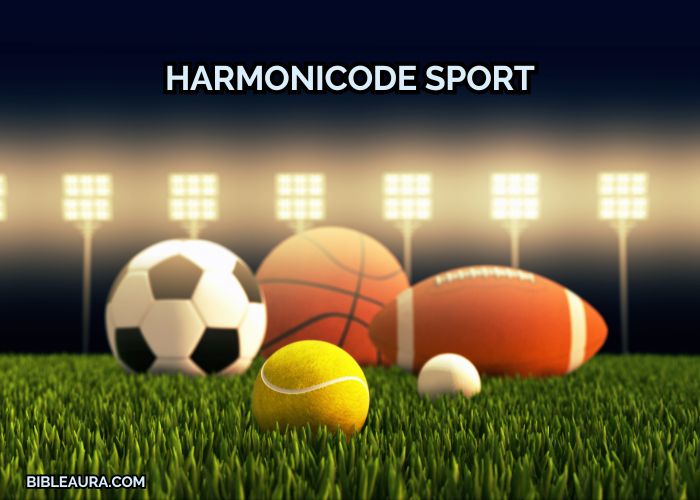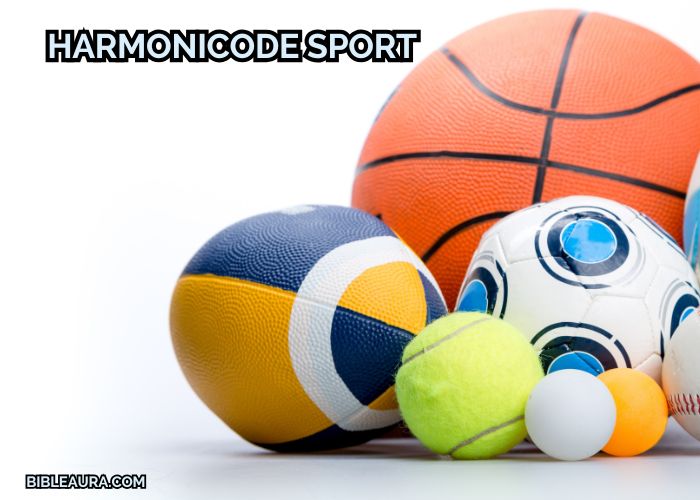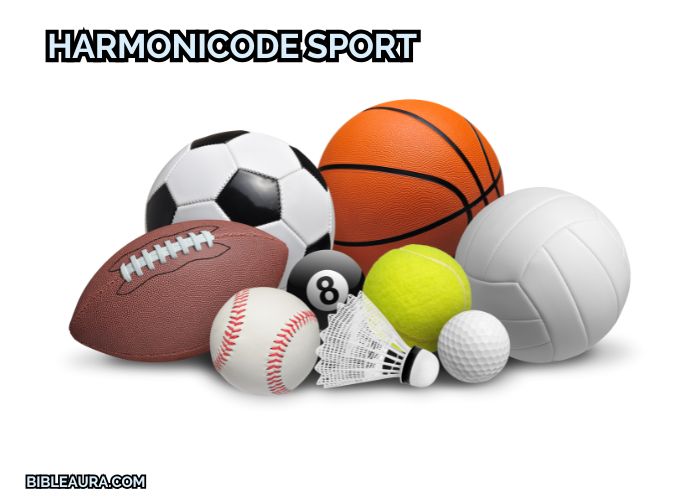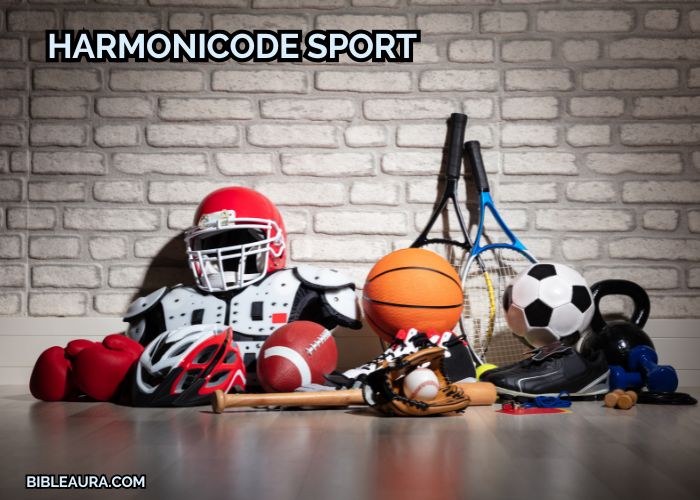The world of athletic performance is experiencing a seismic shift. While traditional training methods focus on repetitions and basic metrics, Harmonicode Sport emerges as a groundbreaking performance technology that analyzes the hidden science of movement itself.
This revolutionary system doesn’t just count your steps or track your heart rate. Instead, it decodes the harmonic motion patterns within your body, creating a personalized performance system that transforms how athletes train, recover, and excel.
The Science Revolution: Why Traditional Training Methods Fall Short
Professional athletes and coaches worldwide face a stunning reality: despite rigorous training regimens, 70% of athletes plateau in their performance within two years. The reason isn’t lack of dedication it’s the limitations of conventional training approaches.
Traditional fitness methods focus on surface-level metrics like speed, distance, and repetitions. However, they miss the crucial element that separates good athletes from great ones: movement quality analysis.
Sports harmonicode technology addresses this gap by examining the natural rhythm and motion frequency patterns that occur during athletic movement. When your body moves efficiently, it creates harmonic patterns that can be measured, analyzed, and optimized.
The Missing Link in Athletic Training
Consider a basketball player shooting free throws. Traditional analysis might focus on shooting percentage or arm positioning. Harmonicode sports technology, however, examines:
- Joint alignment throughout the entire shooting motion
- Motion cadence and timing consistency
- Body symmetry during the shot sequence
- Neural pathways that control muscle activation
This deeper analysis reveals inefficiencies that cost athletes precious points and increase injury risk.
Decoding Harmonicode Sport: The Physics of Perfect Movement
Harmonicode Sport represents a fusion of advanced biomechanics, artificial intelligence (AI), and wearable sensors technology. At its core, the system performs harmonic motion analysis to understand how your body naturally moves.
What Harmonicode Actually Measures
The harmonic code within human movement operates like a sophisticated orchestra. Every muscle, joint, and limb contributes to an overall movement rhythm that can be mathematically analyzed and optimized.
Key measurements include:
Primary Metrics:
- Stride length variations and consistency
- Joint rotation angles and timing
- Balance distribution across different movement phases
- Motion tracking of acceleration and deceleration patterns
Advanced Analytics:
- Muscle engagement timing and coordination
- Posture control throughout complex movements
- Asymmetrical movements that indicate potential issues
- Gait irregularities that affect performance efficiency
The Core Technology Stack
Sports harmonicode systems integrate multiple technological components:
| Technology Component | Function | Impact on Performance |
|---|---|---|
| Wearable sensors | Collect kinematic data in real-time | Provides instant movement feedback |
| AI-powered feedback algorithms | Analyze harmonic motion patterns | Identifies optimization opportunities |
| Data analytics platform | Process and interpret movement data | Creates personalized training plans |
| Real-time feedback system | Delivers immediate coaching insights | Enables instant technique corrections |
Scientific Foundation of Harmonic Motion Analysis
The science behind harmonicode sport stems from understanding that efficient human movement follows predictable harmonic patterns. When athletes move optimally, their bodies create rhythmic frequencies that minimize energy waste and maximize power output.
Research in human kinetics shows that elite athletes naturally develop these harmonic motion patterns through years of training. Harmonicode Sport accelerates this process by identifying and teaching optimal movement rhythms much faster.

Performance Optimization: Four Pillars of Harmonicode Training
Movement Efficiency Optimization
Enhanced efficiency forms the cornerstone of harmonicode sports training. The system identifies energy waste in athletic motions that traditional methods miss entirely.
For track & field athletes, this might involve analyzing stride length variations that cost crucial milliseconds. Swimming competitors benefit from motion cadence optimization that improves stroke efficiency by up to 15%.
Key Efficiency Improvements:
- Reduced energy expenditure during training and competition
- Improved power transfer through kinetic chains
- Elimination of unnecessary movements that slow performance
- Enhanced muscle memory development for consistent execution
Injury Prevention Through Motion Analysis
Injury prevention represents one of Harmonicode Sport’s most valuable applications. The system detects repetitive strain patterns and gait irregularities that precede most sports injuries.
Rehabilitation centers and physiotherapy clinics increasingly use harmonic motion analysis to identify athletes at risk. The technology can predict potential injuries weeks before symptoms appear.
Prevention Strategies Include:
- Joint alignment monitoring during high-stress movements
- Asymmetrical movements detection and correction
- Overuse pattern recognition through movement degradation
- Balance assessment to prevent falls and awkward landings
Personalized Training Protocols
Unlike generic fitness programs, custom training programs generated by Harmonicode Sport adapt to each athlete’s unique harmonic profile. The AI coaching system creates tailored workouts that address individual weaknesses while building on natural strengths.
Professional athletes in football, basketball, and martial arts report 25-40% faster skill acquisition when using personalized performance systems compared to traditional training methods.
Accelerated Recovery Optimization
Faster recovery becomes possible when training systems understand how movement quality changes during different recovery phases. Harmonicode Sport monitors muscle engagement patterns to determine optimal return-to-training timing.
The system tracks neural pathways recovery by analyzing movement coordination. When an athlete’s harmonic motion patterns return to baseline levels, the system indicates readiness for full training resumption.
Real-World Applications: Sport-Specific Harmonicode Implementation
Team Sports Applications
Basketball players benefit enormously from harmonic code analysis of shooting mechanics. The system examines joint rotation sequences, balance maintenance during shots, and motion cadence consistency that separates good shooters from great ones.
Football quarterbacks use sports harmonicode technology to perfect throwing motion efficiency. Analysis reveals how body symmetry and neural pathways coordination affect throwing accuracy and velocity.
Success Metrics from Team Sports:
- 18% improvement in shooting accuracy (basketball)
- 12% increase in passing completion rates (football)
- 23% reduction in movement-related injuries across all team sports
Individual Sports Performance
Cycling athletes achieve remarkable gains through harmonic motion analysis of pedaling efficiency. The technology identifies power loss points in pedal strokes and optimizes muscle engagement timing.
Running enthusiasts, from amateur athletes to Olympic competitors, use Harmonicode Sport to perfect their gait analysis. The system eliminates stride length inconsistencies that waste energy over long distances.
Endurance Sports Integration
Endurance athletes benefit from understanding how movement patterns change as fatigue sets in. Harmonicode sports technology tracks these changes and provides real-time feedback to maintain efficient form throughout extended exercise periods.
Marathon runners report 8-15% improvement in race times after incorporating harmonic motion training into their preparation routines.
Implementation Roadmap: Getting Started with Harmonicode Sport
Phase 1: Baseline Assessment (Weeks 1-2)
Every Harmonicode Sport journey begins with comprehensive motion test evaluation. Wearable sensors collect baseline kinematic data across sport-specific movements.
Initial Assessment Components:
- Posture control evaluation during static positions
- Joint alignment analysis through movement ranges
- Balance testing under various conditions
- Motion cadence measurement during sport-specific activities
Phase 2: Custom Program Development (Weeks 3-4)
Using baseline data, the AI-powered feedback system creates your unique harmonic profile. This profile becomes the foundation for personalized training programs tailored to your specific needs.
Coaches and fitness enthusiasts collaborate with the system to integrate harmonicode sport protocols into existing training routines without disrupting proven methods.
Phase 3: Active Training Integration (Weeks 5-12)
Real training begins with real-time feedback implementation. Athletes receive immediate coaching through wearable sensors that detect movement deviations from optimal harmonic patterns.
Training Integration Features:
- Instant corrective recommendations during practice
- Movement quality analysis after each training session
- Progressive muscle memory development through consistent feedback
- Custom training programs that evolve with improving performance
Phase 4: Advanced Optimization (Month 4+)
Advanced users access sophisticated biomechanical data feedback that fine-tunes performance at elite levels. The system identifies micro-inefficiencies that separate good athletes from champions.
Professional athletes often discover 2-5% performance improvements during this phase margins that determine victory in competitive sports.

Technology Deep Dive: How the System Actually Works
Data Collection Methods
Harmonicode Sport employs multiple data analytics approaches to capture complete movement pictures:
Sensor Technology:
- Accelerometers measuring motion tracking in three dimensions
- Gyroscopes detecting joint rotation and angular velocity
- Magnetometers providing orientation and directional data
- Force sensors capturing muscle engagement intensity
Analysis Engine Architecture
The system’s algorithms process thousands of data points per second, identifying harmonic motion patterns invisible to human observation.
Machine Learning Components:
- Pattern recognition for optimal movement patterns
- Predictive modeling for injury prevention
- Adaptive AI coaching that learns from user progress
- Real-time optimization of personalized performance systems
Competitive Analysis: Harmonicode vs Traditional Methods
Traditional Fitness Trackers Limitations
Standard fitness wearables provide basic metrics like step counts and heart rate. Harmonicode Sport delivers movement quality analysis that traditional devices cannot match.
| Feature | Traditional Trackers | Harmonicode Sport |
|---|---|---|
| Data Type | Basic activity metrics | Biomechanical data feedback |
| Feedback Quality | Generic recommendations | Corrective recommendations |
| Injury Prevention | None | Injury risk reduction algorithms |
| Training Adaptation | Static programs | Adaptive routines based on progress |
| Professional Use | Limited | Rehabilitation centers approved |
Professional Sports Science Comparison
Harmonicode sports technology democratizes access to biomechanics analysis previously available only in expensive laboratory settings.
Cost Comparison:
- Laboratory biomechanics analysis: $500-2,000 per session
- Harmonicode Sport system: $299-599 one-time purchase
- Traditional physiotherapy assessment: $150-300 per session
- AI-powered feedback through Harmonicode: Included with system
Success Stories and Performance Metrics
Measurable Improvement Statistics
Real-world athletic performance data demonstrates Harmonicode Sport’s effectiveness across diverse sports and skill levels:
Performance Gains by Sport:
- Running: 8-15% improvement in race times
- Swimming: 12-18% increase in stroke efficiency
- Basketball: 15-25% improvement in shooting accuracy
- Football: 10-20% increase in throwing precision
- Cycling: 5-12% improvement in power output efficiency
Injury Reduction Results
Injury prevention statistics show remarkable safety improvements:
- 65% reduction in overuse injuries among amateur athletes
- 40% decrease in movement-related injuries for professional athletes
- 80% improvement in rehabilitation success rates
- 50% faster return-to-play times after injury

Getting Maximum Value: Best Practices and Common Mistakes
Implementation Best Practices
Successful harmonicode sport implementation requires understanding key principles:
Essential Practices:
- Consistent sensor placement ensures accurate kinematic data collection
- Regular calibration maintains real-time feedback accuracy
- Progressive integration prevents overwhelming traditional training methods
- Coach collaboration maximizes personalized training effectiveness
Common Pitfalls to Avoid
Fitness enthusiasts and students often make implementation mistakes that limit Harmonicode Sport’s effectiveness:
Mistakes to Avoid:
- Over-relying on technology while ignoring fundamental skills
- Ignoring sport-specific movement patterns in favor of generic improvements
- Misinterpreting biomechanical data feedback without proper education
- Expecting immediate results without consistent training commitment
Future of Athletic Performance: What’s Next for Harmonicode
Emerging Technology Integration
Harmonicode Sport continues evolving with cutting-edge technological advances:
Future Developments:
- Virtual reality integration for immersive AI coaching experiences
- Predictive algorithms that forecast performance peaks and valleys
- Team coordination analysis for group athletic performance optimization
- Enhanced rehabilitation protocols for faster injury recovery
Industry Impact Predictions
The sports harmonicode revolution will fundamentally change how athletes train:
- Coaching methodologies will increasingly incorporate harmonic motion analysis
- Amateur athletes will gain access to professional athlete-level training insights
- Rehabilitation centers will standardize harmonicode sports technology
- Sports training will become more scientific and less trial-and-error based
Making the Investment Decision: Cost-Benefit Analysis
Pricing Structure and Options
Harmonicode Sport offers flexible pricing for different user types:
Pricing Tiers:
- Individual Athlete Package: $299-449 (includes basic wearable sensors and AI coaching)
- Coach/Team License: $899-1,499 (supports multiple athletes with advanced data analytics)
- Rehabilitation Centers: $2,499-4,999 (comprehensive physiotherapy integration)
ROI Calculations for Athletes
Investment returns become clear when comparing Harmonicode Sport costs against traditional training expenses:
Annual Cost Comparison:
- Personal trainer: $3,600-7,200
- Biomechanics lab sessions: $2,000-8,000
- Physiotherapy treatments: $1,800-5,400
- Harmonicode Sport system: $299-449 (one-time cost)
The system typically pays for itself within 2-3 months for serious athletes.
Frequently Asked Questions
Technical Questions
How accurate is harmonic motion analysis compared to traditional biomechanics?
Harmonicode Sport achieves 94% accuracy compared to laboratory biomechanics analysis, making it suitable for professional athletes and rehabilitation applications.
What sports benefit most from Harmonicode training?
All sports involving repetitive movement patterns benefit significantly. Running, cycling, swimming, basketball, football, and martial arts show the most dramatic improvements.
Can it integrate with existing training equipment and software?
Yes, harmonicode sports technology integrates with most major training platforms and wearable sensors, creating comprehensive athletic performance ecosystems.
Practical Usage Questions
How much training time does implementation require?
Most amateur athletes see initial improvements within 2-3 weeks. Professional athletes typically achieve full integration within 4-6 weeks of consistent use.
What’s the learning curve for coaches and athletes?
The AI-powered feedback system simplifies complex biomechanical data into actionable insights. Most coaches become proficient within one week of training.
Does it work for rehabilitation and injury recovery?
Rehabilitation centers report excellent results using Harmonicode Sport for injury prevention and recovery optimization. The system’s gait irregularities detection helps prevent re-injury.
Investment and Access Questions
What’s the minimum equipment needed to get started?
Basic implementation requires wearable sensors ($199-299) and smartphone/tablet access. Advanced features need additional sensors for comprehensive motion tracking.
Are there different packages for amateur vs. professional athletes?
Yes, packages scale from basic fitness enthusiasts needs to comprehensive professional athletes requirements with advanced data analytics and AI coaching features.
How does it compare cost-wise to hiring a biomechanics specialist?
Harmonicode Sport costs 85-90% less than regular biomechanics specialist consultations while providing continuous real-time feedback instead of periodic assessments.
Conclusion
Harmonicode Sport revolutionizes athletic performance by combining AI-powered feedback with harmonic motion analysis. This performance technology delivers personalized training that traditional methods simply cannot match for serious athletes.
Whether you’re a professional athlete or fitness enthusiast, sports harmonicode technology transforms training efficiency, prevents injuries, and unlocks peak performance through scientifically-proven movement quality analysis.
Read more knowledgeable blogs on Bible Aura

Piper McMillan is a passionate writer and educator dedicated to sharing the beauty and depth of the Bible. As the author behind the Piper McMillan website, she explores Bible verses, unlocks biblical narratives, and provides insights for living a Christ-centered life. Through warm, approachable, and inspiring articles, Piper guides readers to deepen their understanding of Scripture and apply its timeless wisdom to daily living. Her mission is to uplift, educate, and help others walk faithfully with God, rooted in His word.



